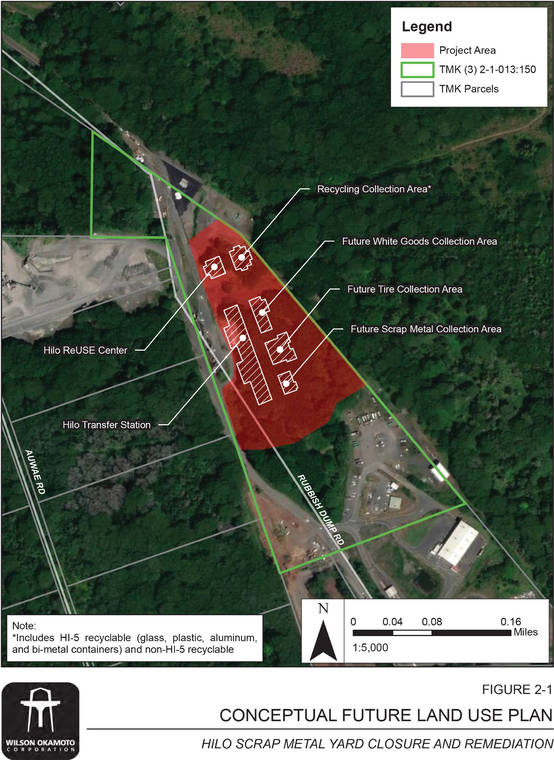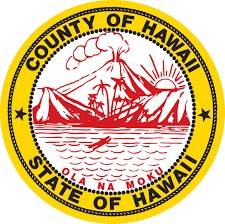A final environmental assessment of the county’s planned permanent closure and remediation of the site of the former Hilo Scrap Metal Yard has resulted in a finding of no significant impact.
The plan for the 13 acres of state-owned land, which is managed by the county through executive order, is to make what Gene Quiamas, project manager for the Department of Environmental Management, calls a “one-stop shop” for solid-waste sorting functions.
The site is about a mile south of Hilo International Airport and a mile east of Kanoelehua Avenue, and access is by Ho‘olaulima Road, formerly known as Rubbish Dump Road.
“Once it’s mitigated, we would like to consolidate all the solid-waste components we have in the area,” Quiamas said. “The only thing you won’t be able to do is green waste. Unfortunately, it’s a different type of service and requires a whole lot more land.”
The EA, prepared by Honolulu consulting firm Wilson Okamoto, described three methods for site remediation.
One is called “clean closure,” in which all solid-waste debris and contaminated soil would be removed from the site and carted to the West Hawaii sanitary landfill. That is the costliest and most time-consuming method.
The cheapest and least time-consuming method is called “capping in place,” which would not involve removal of contaminated soil and solid-waste debris. Instead, the site would be graded and capped with a geotextile separator, which is an engineered synthetic cover system that would prevent direct contact exposure to contaminated materials while allowing water to filter through.
The preferred method chosen by the county is “partial clean closure and capping in place” — a process Quiamas described as “a halfway medium” between clean closure and capping in place.
According to the EA, the mitigation includes “disposing of excavated non-recyclable waste materials and consolidating the lead-contaminated soils on site, grading to optimize future use, and capping with an engineered cover system to prevent direct contact exposure to the lead-contaminated soil.”
“We’ll remove the big items and the most contaminated items to the landfill, and the rest will remain in place and capped,” Quiamas said.
Quiamas said the capping material would be covered by a layer of gravel, topped by concrete where buildings are, asphalt for the parking lot and soil for landscaped areas.
According to the EA, estimated cost of the construction project is $15 million.
Waste disposal will be done at the West Hawaii landfill in Pu‘uanahulu because the nearby Hilo landfill was closed after reaching operational capacity.
“I’m in the process of … putting together all the documents we need to put this out to bid, along with all the documents (the state Department of Health) will want from us,” Quiamas said. “This area, once it’s cleaned up and it’s good for the next purpose, our goal is to set it up so if you come in with your rubbish, you could hit station one. If you have cardboard, you could move on to the next station. If I’m designing it, I’m designing a loop, so there’s a pattern.”
According to the EA, once regulatory approvals have been granted and the construction contract awarded, it is estimated remediation would take a year followed by another six months to complete post-closure documentation, based on current assumptions.
The EA said the proposed action “may result in temporary air quality and soil erosion impacts associated with construction activities.” It concluded that those impacts “would be mitigated through implementation of best management practices” and adherence to government regulations.
“This is still part of operations, so I could probably have technically used an exemption,” Quiamas said, referring to the environmental assessment. “But … it’s a project that the public should know what the county’s planning to do down the road, so we went ahead and did an EA, so we could analyze some of the … potential issues that may come up.”
Email John Burnett at jburnett@hawaiitribune-herald.com.









